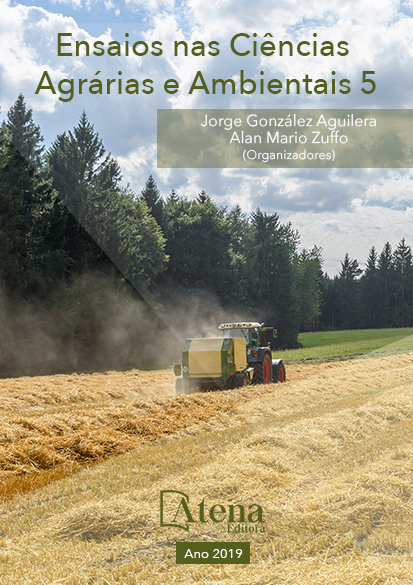
COMPORTAMENTO DA FREQUÊNCIA DE BATIDAS DE UM CARNEIRO HIDRÁULIDO ARTESANAL E SEU EFEITO NO RENDIMENTO
Um dos maiores problemas
existentes em países subdesenvolvidos, é
o abastecimento de água no setor rural. O
experimento foi realizado em uma propriedade
localizada no município de Muzambinho, Minas
Gerais. O carneiro foi confeccionado utilizandose tubulações de PVC de 1 polegada com o
objetivo de avaliar a influência de diferentes
frequências de pulsação da válvula no
rendimento de um carneiro hidráulico artesanal.
Para a confecção do carneiro foram utilizadas
tubulações de PVC e depois de confeccionado, o
carneiro foi instalado com altura de alimentação
de 4,1 metros e altura de recalque de 11,40
metros. Foram testadas cinco frequências
diferentes da batida da válvula de escape,
sendo elas de 36, 40, 48, 60 e 80 batidas por
minuto. Para cada tratamento foram realizadas
três repetições. Os resultados mostraram
que as pulsações que obtiveram os melhores
rendimentos foram as de 48, 60 e 80 batidas por
minuto. Os rendimentos médios encontrados
para pulsação variando de 40 a 80 batidas por
minuto estão dentro da média estipulada pelo
Centro Nacional de Referência em Pequenos
Aproveitamentos Hidroenergéticos – CERPCH.
COMPORTAMENTO DA FREQUÊNCIA DE BATIDAS DE UM CARNEIRO HIDRÁULIDO ARTESANAL E SEU EFEITO NO RENDIMENTO
-
DOI: 10.22533/at.ed.4141916015
-
Palavras-chave: Frequência de pulsação, rendimento, sustentabilidade.
-
Keywords: Pulse rate, yield, sustainability.
-
Abstract:
The main problems in
underdeveloped countries are the supply of
water in the rural sector. The experiment was
carried out in a city located in the municipality
of Muzambinho, Minas Gerais. The ram was
made using 1-inch PVC tubes with the objective
of evaluating an influence of valve pulsation
frequencies without yield of a handmade
hydraulic ram. For the production of the ram,
PVC pipes were used and after they were made,
the ram was installed with a height of 4.1 meters and a settling height of 11.40 meters.
Five different exhaust valve frequencies were tested, being 36, 40, 48, 60 and 80 beats
per minute. For the text was a voice three repetitions. The results were of the type:
pulsations that obtained the best results were those of 48, 60 and 80 beats per minute.
The average yields for pulsation ranging from 40 to 80 are within the mean stipulated
by the National Reference Center on Small Hydroelectric Power Plants – CERPCH.
-
Número de páginas: 15
- Letícia Passos da Costa


